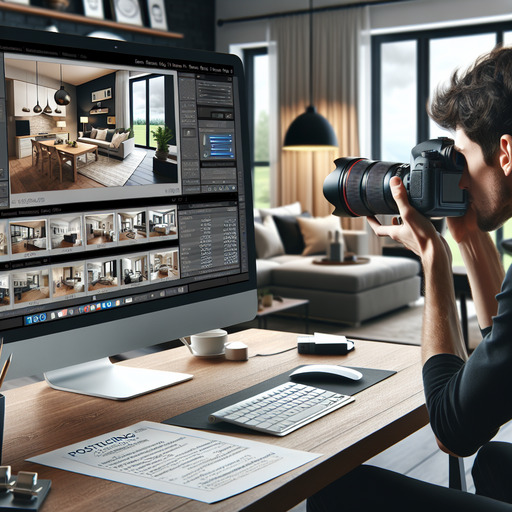
-
Table of Contents
- Mastering Real Estate Photography: Tips, Techniques, and Tools
- Understanding the Importance of Real Estate Photography
- Essential Real Estate Photography Tips
- 1. Mastering Lighting Techniques
- 2. Choosing the Right Equipment
- 3. Composition and Staging
- Real Estate Photography Editing: Enhancing Your Images
- Pricing Your Real Estate Photography Services
- Conclusion
- Questions and Answers
Mastering Real Estate Photography: Tips, Techniques, and Tools
In the competitive world of real estate, first impressions are everything. High-quality real estate photography can make or break a property listing, influencing potential buyers’ decisions before they even step foot inside. This guide will explore essential tips, techniques, and tools to elevate your real estate photography game, ensuring your listings stand out in the crowded market.
Understanding the Importance of Real Estate Photography
Real estate photography is more than just snapping pictures of a property. It’s about capturing the essence and potential of a space, enticing buyers to envision themselves living there. According to the National Association of Realtors, 87% of home buyers found photos to be the most useful feature of online listings. This statistic underscores the critical role photography plays in real estate marketing.
Essential Real Estate Photography Tips
1. Mastering Lighting Techniques
Lighting is crucial in real estate photography. Natural light is your best friend, so schedule shoots during the day when the property is well-lit. Use additional lighting equipment to fill in shadows and highlight key features.
- Utilize soft, diffused lighting to create a warm and inviting atmosphere.
- Experiment with different angles to find the best light for each room.
- Consider using HDR (High Dynamic Range) photography to balance light and dark areas.
2. Choosing the Right Equipment
Investing in quality real estate photography equipment can significantly impact the final results. A DSLR camera with a wide-angle lens is a popular choice among professionals.
- Use a tripod to ensure stability and consistency in your shots.
- Consider a drone for aerial shots, providing a unique perspective of the property.
- Invest in a good photo editing software to enhance your images post-shoot.
3. Composition and Staging
Composition and staging are key to creating visually appealing real estate listing photos. Ensure each room is clean, decluttered, and well-organized before shooting.
- Use the rule of thirds to create balanced and engaging compositions.
- Highlight unique features, such as fireplaces or large windows, to add interest.
- Stage the property with minimal, tasteful decor to help buyers visualize the space.
Real Estate Photography Editing: Enhancing Your Images
Editing is an essential step in real estate photography services. It allows you to correct lighting issues, enhance colors, and remove any distractions from the images.
- Use software like Adobe Lightroom or Photoshop for professional-grade editing.
- Adjust brightness, contrast, and saturation to make the images pop.
- Consider virtual staging to digitally furnish empty rooms.
Pricing Your Real Estate Photography Services
Determining real estate photography pricing can be challenging. Consider factors such as the size of the property, the number of images required, and any additional services like drone photography or virtual tours.
- Research competitors’ pricing to ensure your rates are competitive.
- Offer package deals to provide value to clients.
- Be transparent about your pricing structure to build trust with clients.
Conclusion
Real estate photography is a powerful tool in the property market, capable of transforming listings and attracting potential buyers. By mastering lighting, choosing the right equipment, and honing your editing skills, you can create stunning images that showcase properties in their best light.
For more insights into real estate photography, check out this Wikipedia page on real estate photography.
Questions and Answers
Q1: What is the best time of day for real estate photography?
A1: The best time for real estate photography is during the day when natural light is abundant. Early morning or late afternoon provides soft, diffused lighting that enhances the property’s features.
Q2: How can I make small rooms look bigger in photos?
A2: Use a wide-angle lens to capture more of the room in a single shot. Additionally, keep the room tidy and use mirrors to create the illusion of space.
Q3: What are the benefits of using drone photography in real estate?
A3: Drone photography offers a unique aerial perspective, showcasing the property’s surroundings and layout. It can highlight features like large yards, pools, or proximity to amenities.
If you’re interested in learning more about our real estate photography services or have any questions, please contact us.